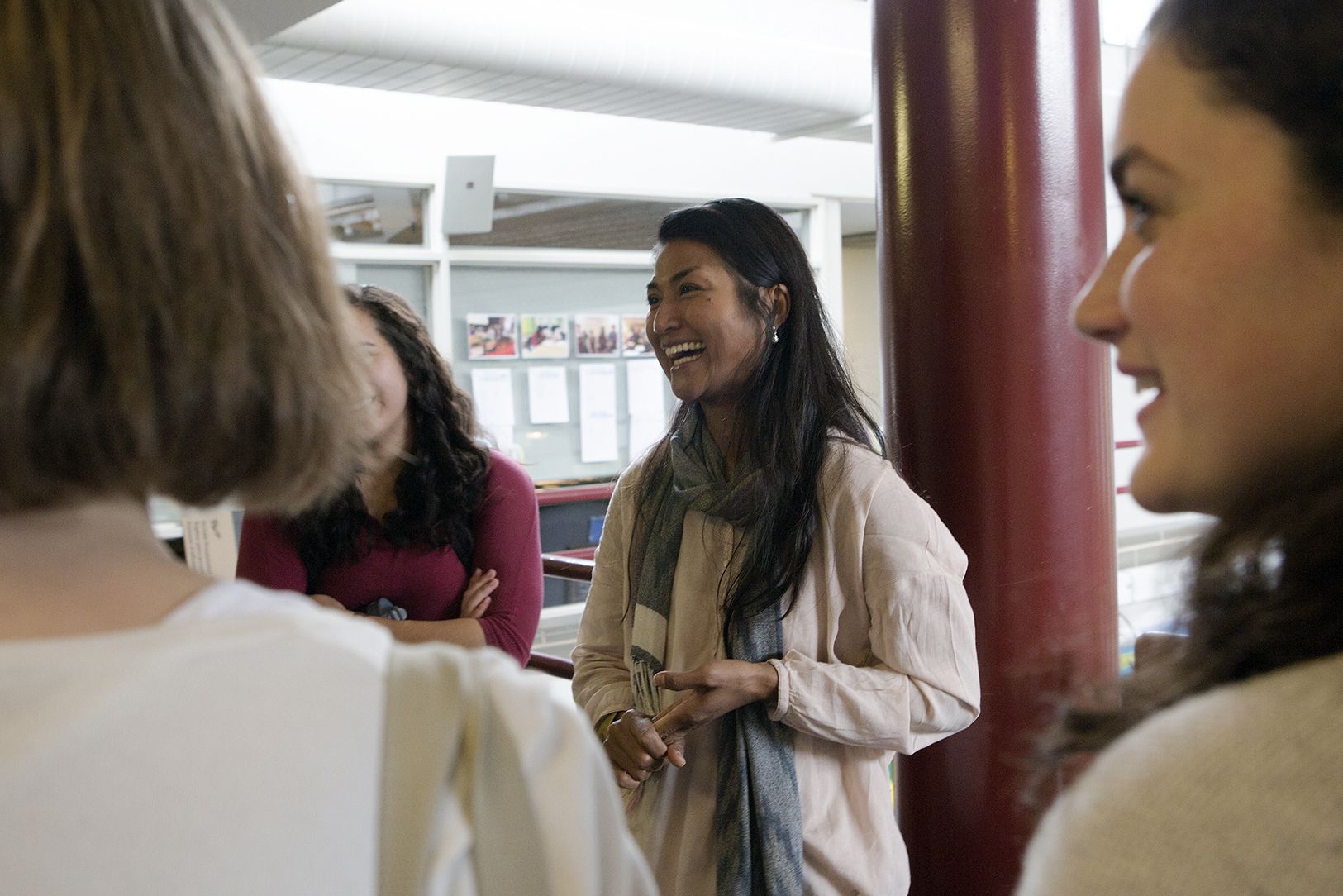In late March the Pulitzer Center continued its now five-year tradition of screening films by our grantee journalists at the Environmental Film Festival in the Nation’s Capital. After this year’s screening of Gary Marcuse’s joint venture with Shi Lihong, “Searching for Sacred Mountain,” and Kalyanee Mam’s “Fight for Areng Valley,” the filmmakers joined a panel with The New Yorker’s Evan Osnos to discuss the role religion might play in protecting the environment, particularly in China and Cambodia.
But the film festival audience wasn’t the only group Gary and Kalyanee met with while they were in town. Between the two of them they also visited six D.C. schools – Ballou, Roosevelt, Wilson and McKinley Technology high schools as well as the Edmund Burke School and Oyster-Adams Bilingual School. They discussed with students not only the conservation issues they explored as journalists but also humans’ ancient, intimate and complex relationship with nature and art.
Kalyanee, who worked as a lawyer before turning her hand to film, encouraged art and culture and photography students at Ballou to follow their passions; in each class she asked the students to tell her one at a time how they express themselves.
“Only by expressing myself can I really find who I am,” she told them. “What was most important for me [in becoming a filmmaker] was that I had a passion for something…and it didn’t really matter to me that I didn’t know how to do it, that I didn’t have the technical skills. I think a lot of you have it inside you; you just have to find what it is that helps you express it.”
Gary, whose film “Searching for Sacred Mountain” explores the role of religion, particularly Tibetan Buddhism, in preserving China’s environment, was interested in students’ involvement in “green” initiatives such as their school recycling clubs.
“What interests me is what you know when you think about the environment, and how that differs from five years ago,” he told students at Woodrow Wilson High School. They discussed how the students see nature in and around Washington, D.C.; several students expressed that they felt living in a city helped them see nature as “something to be valued” or that they felt “lucky” to have nature available to them.
“When you’re feeling ‘lucky,’ what is that feeling?” Gary asked. “What is it that sets you off?”
“When I’m in nature,” one student explained, “I feel like I’m more connected to the universe.”
Students who spoke with both Kalyanee and Gary were also able to draw slightly more local connections to the films, both of which were shot in Asia.
“They don’t need money,” Kalyanee said of the Chong people of Areng Valley in southwest Cambodia, who have lived on that land for 600 years and are now at risk of displacement for the construction of a hydroelectric dam. “What matters to them is land. And in our society, we lose that perspective.”
During Kalyanee's visit Adam Reinhard, an art and photography teacher at Ballou High School, brought up the issue of gentrification in the school’s southeast D.C. neighborhood of Anacostia. Ballou is a neighborhood school, and most students walk to campus.
“Southeast is expanding, getting newer – it’s the same thing,” Adam said. “You’re talking about people who’ve lived in one place for a long time and are displaced by people with a lot of money…You have things in common with these people. You don’t look like them, you don’t speak the same language as them, but you’re going through the same situation as they are.”
Students agreed. “What makes you think you can just come to somebody’s home and make them leave?” one demanded.
“The issues people are going through across the world parallel what happens here,” Roosevelt High School social studies teacher Lesina Martin told her class. Roosevelt is in Petworth, another fast-changing D.C. neighborhood.
“You’ve got to understand how all of those things are connected,” Lesina continued. “For one thing, we’re all humans. We all want the same stuff. We need love; we need air, water, nature.”
“I think the courage these people have to stand up and protect what is rightfully theirs that’s more powerful than what the dam represents,” one Edmund Burke student said. “People are more powerful than what they build.”
At Oyster-Adams Bilingual School Kalyanee spoke with a group of eighth-graders who filled us in on what they’d learned about the pros and cons of hydroelectric energy, which they’d been studying.
When it came time to clear the library at the end of the day, a groan went up. “No, this is interesting!” one student exclaimed.





